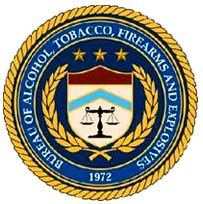

USA -(AmmoLand.com)- In an effort to keep firearms out of the hands of prohibited persons and to promote good business practices, the Bureau of Alcohol, Tobacco, Firearms and Explosives (ATF) is providing this information to help educate the firearms industry and Federal firearms licensees (FFLs) about preventing the loss of firearms.
FFLs should conduct business inventories to identify and prevent firearms inventory loss by theft or improper recordkeeping.
By conducting an inventory and comparing the physical inventory to the acquisition and disposition (A&D) record, FFLs can:
- provide timely trace information to assist law enforcement with criminal investigations;
- ensure the accuracy of inventory balances;
- determine if firearms have been stolen by customers or employees;
- remain in compliance with laws and regulations on recordkeeping and reporting of lost or stolen firearms.
There are four general steps to take when conducting an inventory. Each step will assist you in ensuring all firearms on the premises are properly recorded in your A&D record. It will also ensure that all firearms no longer at the licensed premises have dispositions recorded.
First, identify all ‘open dispositions.’ An open disposition is a firearm recorded as an acquisition in the A&D record with no corresponding disposition information recorded. All open dispositions should have the corresponding firearm in physical inventory.
Second, identify and create a list of all firearms in physical inventory. All firearms that are part of the business inventory should be included on this list. Record all identifying information directly from the firearm, not from its box.
Third, compare the firearms inventory list to the A&D record. Each firearm in inventory should be recorded as an acquisition with a corresponding open disposition. Review the list, one firearm at a time, and ensure each firearm is accounted for in the A&D record. As you locate each firearm in the acquisition record, place a check mark next to each firearm on the list so you have documented each firearm for which you have accounted in your records. Any firearm not found in the A&D record means you did not record the acquisition in the A&D record.
Next, compare the open dispositions to the list of firearms. Using a pencil, place a small check on the corresponding open disposition side of the A&D record for all of the open entries that match up to the list. Any open disposition without a check mark means that a firearm may be potentially missing.
Fourth, reconcile the inventory. Your inventory is accounted for in your records if the comparison of the firearms inventory list to A&D record and A&D record to firearms inventory list yields a check mark for each firearm on the inventory list and a check mark for each open disposition.
Any firearm on the inventory list without a check mark has not been entered into the A&D record and must now be recorded. Consult any commercial records you may have to determine the date of acquisition and from whom the firearm was received. If no acquisition date can be ascertained, enter the date of acquisition as the date you are conducting this inventory reconciliation.
Any open disposition without a check mark is a potential firearm missing from inventory. You must now find that firearm.
The potentially missing firearm may be in inventory or may have been transferred. Check your ATF Forms 4473, commercial documents, transfers to other FFLs and returns of repaired firearms to determine the final disposition of the firearm. If you still have not located the firearm, re-check the firearms inventory. Ensure that you have recorded every single firearm in inventory on your list. If you are able to locate the disposition information, be sure to record the disposition in your A&D record. If you are unable to locate the firearm or its corresponding transfer paperwork, you must report the firearm as missing to ATF.
Any firearm in inventory with no open disposition may be the result of an improper disposition of another transfer. Check dispositions of similar firearms to ensure that the correct serial numbers have been recorded for their dispositions.
Report missing and stolen firearms first to your local law enforcement agency and then to the ATF Stolen Firearms Program Manager at 1-888-930-9275. ATF will provide you with a unique incident number that you will record on ATF Form 3310.11, Report of Theft or Loss. Form 3310.11 may be downloaded on the ATF website at https://www.atf.gov/file/4996/download, obtained from your local ATF office, or obtained by calling the ATF Distribution Center at (703)870-7526. Follow Form 3310.11 instructions on recording the information in the A&D record for each firearm reported lost or missing.
Please know that a firearm stolen or lost in transit on a common or contract carrier, including the U.S. Postal Service, is considered stolen or lost from the transferor/sender licensee’s inventory for reporting purposes. Therefore, the transferor/sender of the stolen or lost firearm shall report the theft or loss of the firearm on ATF Form 3310.11 within 48 hours after the transferor/sender discovers the theft or loss.
The ATF field office in your area can provide seminars on conducting inventories. The ATF website includes information and updates for the FFL industry at www.atf.gov.
How To Contact Us
If you have any questions relating to your FFL, please contact:
Bureau of ATF
Firearms Industry Programs Branch
99 New York Avenue, NE.
Washington, DC 20226
Telephone: (202) 648-7190
Fax: (202) 648-9601
fipb@atf.gov
To contact your local ATF office go to: https://www.atf.gov/contact/atf-field-divisions. To report suspected illegal firearms activities, please call 1-800-ATF-GUNS (1-800-283-4867).
About the Bureau of Alcohol, Tobacco, Firearms and Explosives (ATF):
ATF protects the public from crimes involving firearms, explosives, arson, and the diversion of tobacco products; regulates lawful commerce in firearms and explosives; and provides worldwide support to law enforcement, public safety, and industry partners.
For more information, visit: www.atf.gov.
